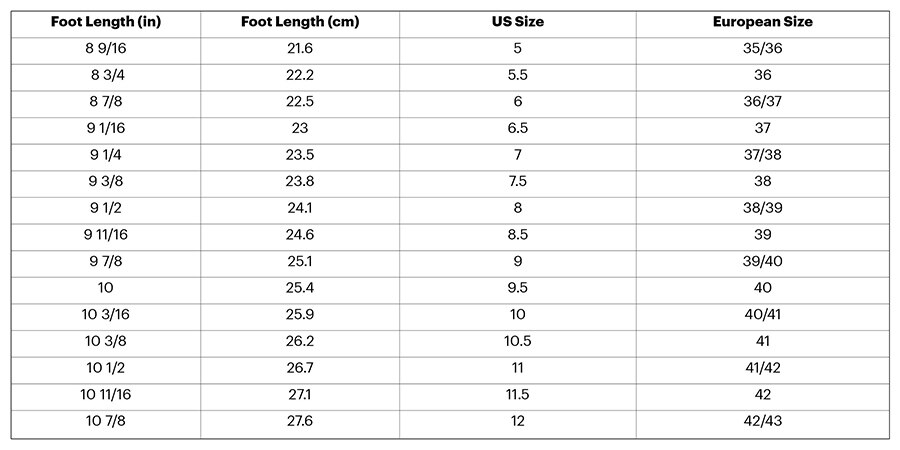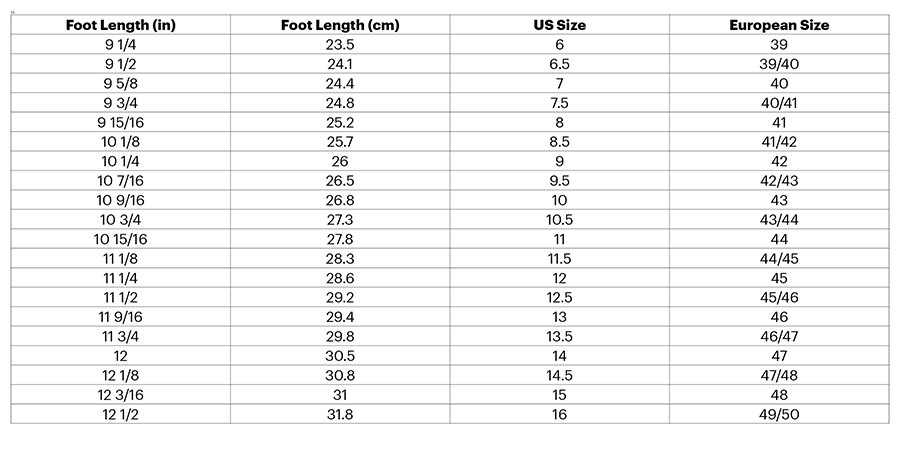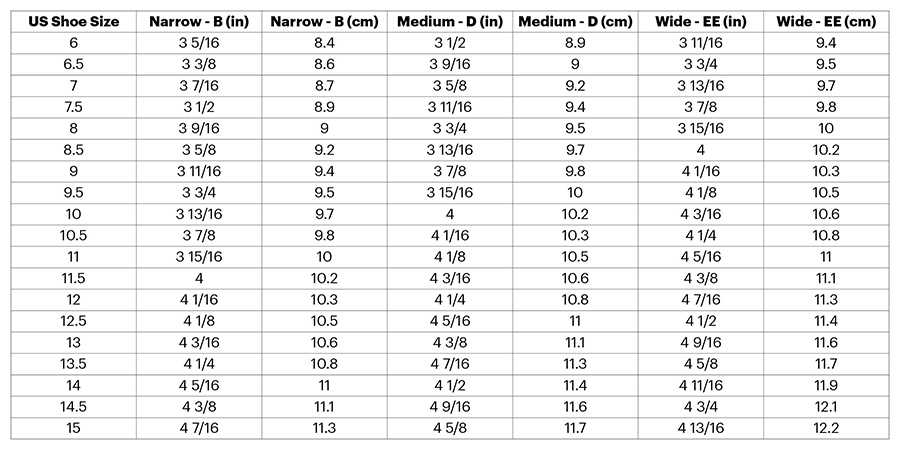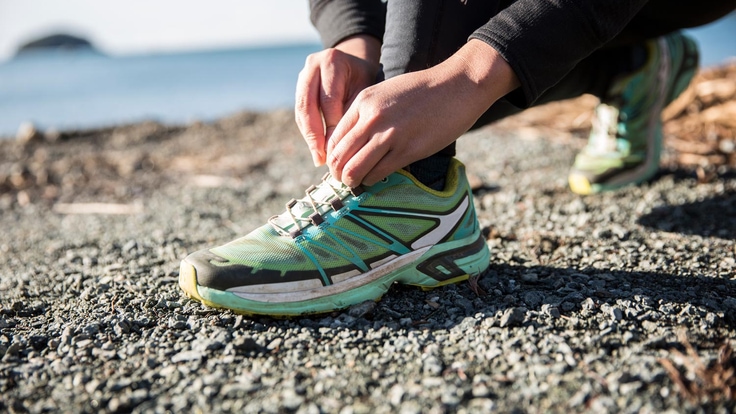With 26 bones apiece, feet are biomechanically complex beasts. In addition, we humans have an incredible diversity of foot sizes and shapes. Thus, even with myriad advances in running shoe technology and design, getting a good fit isn't always easy to do.
Proper fit should always be the determining factor in running shoe choice. Never fall in love with any shoe before you know it will fit your feet, because an awesome shoe that fits poorly becomes decidedly not awesome when you actually run in it. With hundreds of running shoes and trail-running shoes to choose from, it's still helpful to narrow down your choices before you try them on: How to Choose Running Shoes and How to Choose Trail Runners are a good place to start. Just remember that your chosen shoe ultimately needs to prove that it fits your foot correctly.
How Should Running Shoes Fit?
When you're first trying on your running shoes in the store or at home, look for the following:
- Proper toe fit: You want a thumb's width of space between your toe and the end of the shoe.
- Midfoot and heel fit: You should have a snug (but not tight) fit at the midfoot and heel.
Then, after you've worn the shoes for a while, first in your home (easier to return if there are issues) and then out for one or two trial runs, look for any of these signs that your running shoes don't fit properly:
- Tingling or numbness in the toes: This can indicate insufficient volume in shoes (if you have a high-volume foot); it can also mean that your shoes are too short or too narrow. Shoes that are too narrow can lead to serious foot problems, so don't wait to address this.
- Blisters between or on top of toes: Your shoe is probably too small.
- Blisters on the ball of your foot: Your shoe is probably too wide.
- Bruised toe(s): Your shoes aren't long enough.
- Heel blisters: First try lacing your shoes with a runner's loop (learn how in our article, How to Lace Running Shoes). If that doesn't fix things, then a shoe with a narrower heel cup may likely be the solution.
If you're convinced that something isn't right, clean your shoes up and head back to the store. Don't wait too long, though, because worn shoes make returns problematic.
Tips for Getting a Great Running Shoe Fit
The key to getting a good fit is to plan ahead before you shop. Whether you're getting road runners or trail runners, the following tips will set you up for a successful fit session:
- Go to a store with a healthy selection of shoes and a savvy footwear fitter on staff. A knowledgeable specialist should understand fit subtleties like arch length and foot volume.
- Call ahead for the best experience. You don't need to make an appointment, but you should pick a less busy time and ask when the most experienced footwear staff are working.
- Fit to your largest foot. Almost every human's feet differ slightly in size from one another; base fit on the larger foot because it's the one that will suffer most if the shoe is too short.
- Detail your foot issues. A fit specialist needs to know about everything from bunions to hammertoes; even temporary conditions like plantar fasciitis are important.
- Wear the socks you plan to run in. You're really fitting your feet plus your socks.
- If you wear orthotics, bring those in, too.They definitely affect shoe fit.
- Get fit at the end of the day. Your feet swell throughout the day and you should get fit when your feet are at their largest. If you want to be extra precise, you can fit your feet after you've been standing (or running) for as long as your running workouts typically last.
- Always re-measure your shoe size. Your feet change as you age, so it's critical to know the size of your feet right now, not simply the last time you got a pair of shoes. Foot size can also change because of a weight gain or loss, a pregnancy or a surgery.
- Be aware of brand fits. Each brand has its own proprietary foot model, or "last," so you'll have better fit success if your foot is close to a particular brand's last. This is something that only a footwear specialist will know, though, which is why an in-store fit session is key.
Video: How to Size and Fit Running Shoes
Running Shoe Length and Width Size Charts
Measure the length and width of your feet using the tips in the video above, then consult with the following size charts to find your perfect fit.
Women's Running Shoe Length Size Chart

Men's Running Shoe Length Size Chart

Women's Running Shoe Width Size Chart

Men's Running Shoe Width Size Chart


